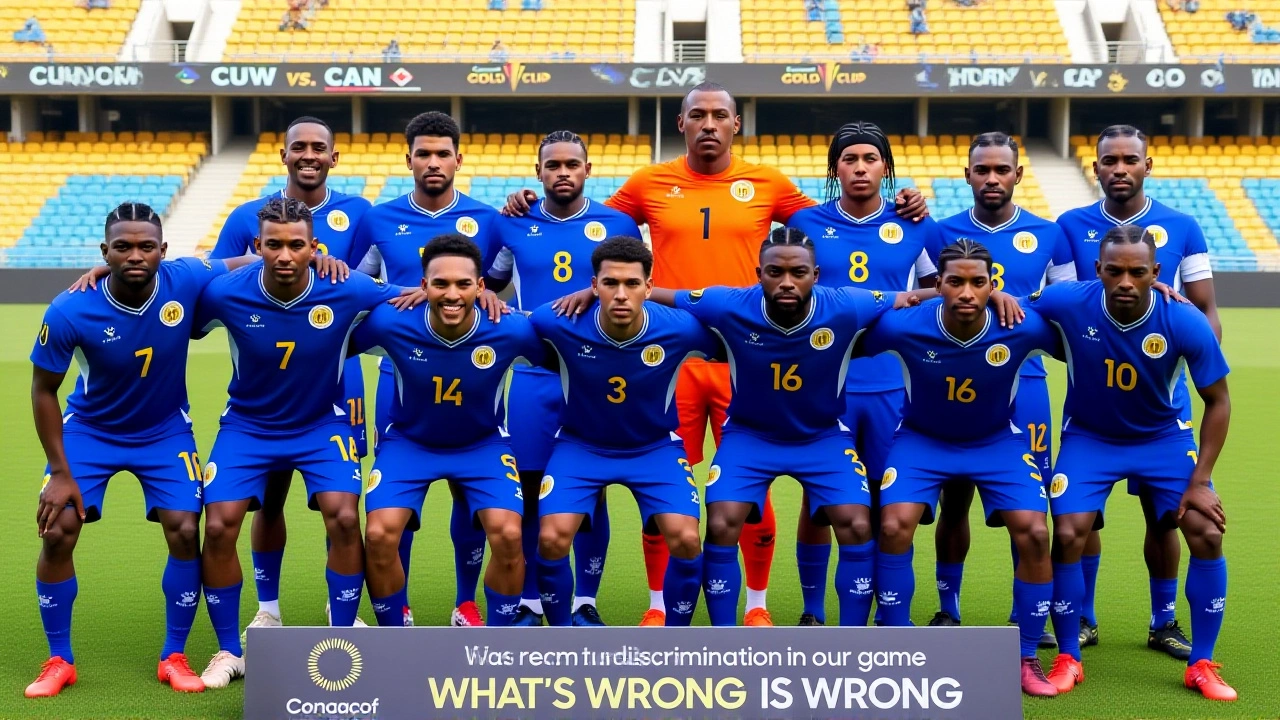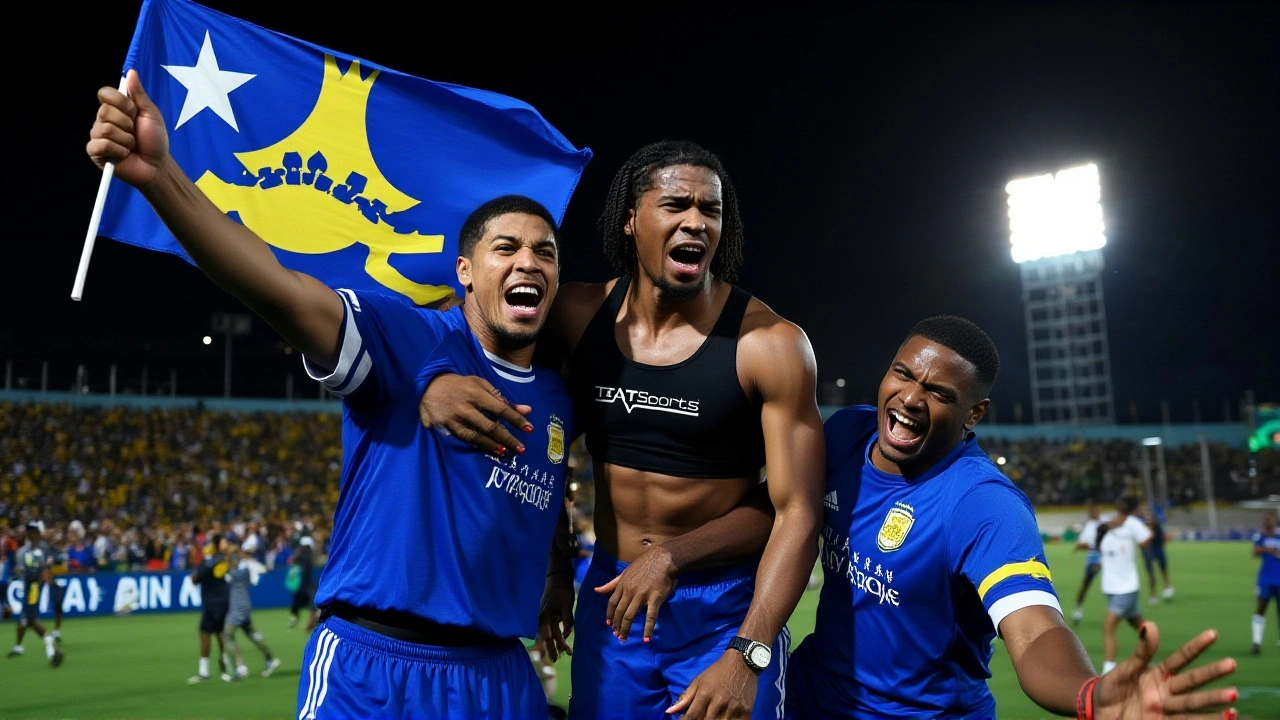
The tiny island of Curaçao just rewrote football history. On November 19, 2025, its national team stunned the football world by beating Jamaica to secure a spot in the 2026 FIFA World CupMexico, United States, and Canada—making it the smallest nation ever to reach the tournament’s final stage. With a population of roughly 160,000, Curaçao is smaller than many U.S. counties. Yet here it is: heading to the world’s biggest sporting event. The victory, confirmed in a raw, emotional video by Agence France-Presse, wasn’t just a win. It was a declaration.
A Nation That Refused to Be Ignored
Curaçao didn’t arrive at this moment by accident. Since gaining independent FIFA membership in 2011 after the dissolution of the Netherlands Antilles, the team has been building quietly—often overlooked, rarely praised. They’ve lost more than they’ve won. Played in front of half-empty stadiums. Faced teams with bigger budgets, bigger squads, bigger names. But they never stopped believing. This time, in the CONCACAF qualifiers, they outlasted Jamaica—a regional powerhouse with a richer football tradition and far greater resources. The exact score? Unknown. The venue? Unspecified. But the feeling? Unmistakable.The post-match celebration, captured in a 67-second AFP video, speaks louder than any stat sheet. An unnamed player, face streaked with sweat and tears, turned to his teammates and said: "I’m so proud of you guys and thank you." Then, at 17 seconds: "We’re super proud. You guys did great. I didn’t expect this because I thought Jamaica was a strong team, but we did it." At 27 seconds: "Finally, we did it." And then—the line that will echo through Caribbean football history: "We will show everyone that we are small, but we are big at heart. We’re going to show them that we are big at heart."
What This Means for Small Nations
This isn’t just a feel-good story. It’s a blueprint. Curaçao joins Cape Verde, Jordan, and Uzbekistan as first-time qualifiers for the 2026 World Cup. But unlike those nations, Curaçao’s population is smaller than any other country to ever reach the tournament. For context: the next smallest World Cup participant was Iceland (340,000) in 2018. Curaçao is less than half that size. That’s not a footnote—it’s a revolution.For decades, football’s global stage has felt like a club for the wealthy and populous. But Curaçao’s success proves talent isn’t tied to GDP. Their academy system, developed with Dutch support, focuses on technical skill over physical dominance. Their players are often based in lower-tier European leagues—not the Premier League, but the Dutch Tweede Divisie, Belgian Second Division, even the Curaçao Premier League. They don’t have superstars. They have heart. And now, they have a stage.
The Road to 2026: What’s Next?
The draw for the 2026 World Cup group stage will happen in December 2025. Curaçao will be placed in Pot 4—the lowest seeding—likely facing giants like Brazil, Spain, or Germany. No one expects them to win the tournament. But they don’t need to. Their goal? To compete. To make history. To show kids on the island that if you believe, you can play with the best.Local schools are already planning World Cup viewing parties. A mural of the team is being painted in Willemstad. Merchandise sales have spiked 300% in the past week. And while the government hasn’t announced official funding yet, private sponsors are lining up. One local businessman told AFP: "We didn’t just qualify for the World Cup. We qualified for pride."

A Legacy Beyond the Pitch
Curaçao’s journey mirrors the rise of other small nations in global sports—like San Marino in soccer, or Monaco in Formula 1. But unlike those, Curaçao’s team is not a token presence. They earned this. They beat Jamaica on merit. They didn’t get a wildcard. They didn’t benefit from a weak group. They fought through a brutal CONCACAF qualifying path that eliminated powerhouses like the United States and Canada in earlier rounds.The cultural impact? Massive. For a nation that’s often seen as just a tourist destination, this is a moment of identity. Football is the language here. Every child grows up kicking a ball on the concrete streets of Piscadera or Santa Ana. Now, they’re not just dreaming of playing for Curaçao—they’re dreaming of playing on the World Cup stage.
Frequently Asked Questions
How did Curaçao qualify for the World Cup despite its small size?
Curaçao qualified through the CONCACAF region’s competitive qualifying format, finishing ahead of Jamaica in their group after a tense 2-leg playoff. They relied on disciplined defending, quick counterattacks, and a strong youth development system supported by Dutch football infrastructure. Their win wasn’t luck—it was the result of years of investment in grassroots football and tactical discipline.
Why is Curaçao considered the smallest country to qualify?
With a population of approximately 160,000 and a land area of just 444 square kilometers, Curaçao is smaller than any other nation to ever reach a World Cup finals. Previous smallest qualifiers like Iceland (340,000) and Trinidad and Tobago (1.3 million) were significantly larger. FIFA recognizes sovereign states by population, not territory, making Curaçao’s achievement unprecedented.
Who are Curaçao’s key players?
While the team lacks globally known stars, standout performers include striker Stefano Rijssel, who scored crucial goals in the qualifiers, and captain Sheldon Bateau, a veteran defender who plays in Belgium. Goalkeeper Wesley Hoedt, who previously played for Dutch Eredivisie side AZ Alkmaar, brings international experience. Most players are based in lower European leagues or local clubs, highlighting the team’s resourcefulness.
What’s the financial impact of this qualification?
FIFA guarantees $1.5 million in participation bonuses to each of the 48 teams in 2026. Additional revenue from sponsorships, merchandise, and broadcasting rights could push Curaçao’s total earnings to over $2.3 million—enough to fund national youth academies for nearly a decade. Local businesses have already reported a 40% surge in tourism inquiries from fans wanting to visit the island ahead of the tournament.
What’s the historical significance of this moment?
Curaçao’s qualification shatters the myth that only large, wealthy nations can compete at the highest level. It’s the first time a Caribbean nation with fewer than 200,000 people has reached the World Cup. The moment echoes Haiti’s 1974 appearance and Jamaica’s 1998 run—but surpasses them in scale. It’s a symbol of resilience for small nations everywhere, proving that passion and organization can overcome size.
Will Curaçao be competitive in the 2026 World Cup?
They won’t be favorites. But they’ve already proven they can beat stronger teams. Their style—fast, compact, and physically resilient—could frustrate bigger sides. In a group with a powerhouse like Brazil or Germany, a draw or even a narrow loss could be considered a triumph. Their real goal? To make every match a spectacle, to earn respect, and to show the world that football belongs to everyone—not just the biggest countries.